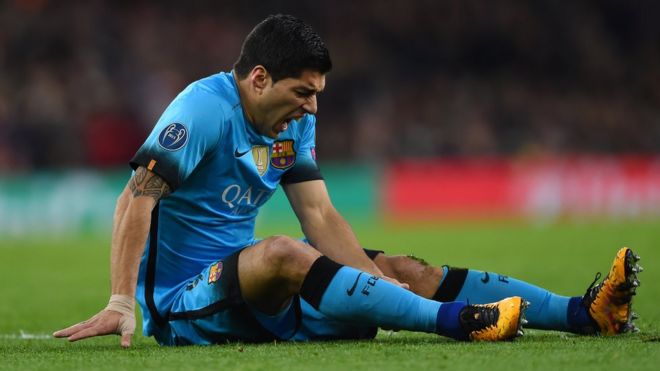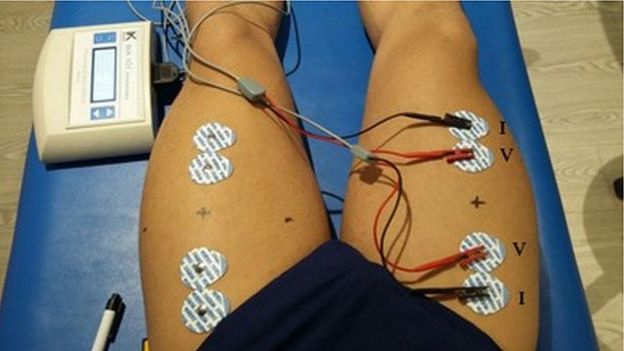A Brief Colonial History Of Ceylon(SriLanka)
Sri Lanka: One Island Two Nations
A Brief Colonial History Of Ceylon(SriLanka)
Sri Lanka: One Island Two Nations
(Full Story)
Search This Blog
Back to 500BC.
==========================
Thiranjala Weerasinghe sj.- One Island Two Nations
?????????????????????????????????????????????????Friday, June 23, 2017
Measuring muscle gap 'helps players back on their feet'
Footballers often sustain muscle injuries and can be out for months




The technique uses electric current to assess the extent of a muscle injury-UPC/FC BARCELONA-SHAUN BOTTERILL/GETTY IMAGES

22 June 2017
A new way of measuring the severity of muscle injuries could help footballers return to action more quickly, research suggests.
Spanish scientists said passing a current through the affected muscles
gave a clearer picture of soft tissue damage than ultrasound or MRI
scans.
This could give clubs a better idea of injury lay-off times.
The technique was tested on 18 professional footballers' injuries at FC Barcelona.
Injuries to skeletal muscles are common in competitive sport, particularly football, where they account for 30% of all injuries.
The study,
from the Polytechnic University of Catalunya, said it was often
difficult to get a clear idea of when athletes would be fit again.
This is because the "muscle gap" - or muscle damage - cannot easily be measured by current methods.
The new technique, called localised bioimpedance measurement (L-BIA),
works by sending a low intensity alternating current through healthy
muscle tissue and then comparing that with readings from injured tissue.
Dr Javier Yanguas, lead doctor at FC Barcelona, said of the new
technique: "It can support the image from ultrasound or MRI to help
quantify the disrupted soft tissue structure in injured muscles."
He also said it was a cheap and non-invasive method.
The study looked at 22 muscle injuries in 18 Barcelona players over five years.
The researchers took measurements soon after the footballers' injuries
occurred and then again when they returned to the fray, and they also
compared them with healthy muscles.
As a result, they were able to separate the injuries into two distinct
groups, work out the seriousness of the injury and then the players'
likely recovery time.
Dr Yanguas said: "The prognosis of the injury and the return-to-play
time will depend, among other things, on the severity of the injury.
"These will be wrong if the classification of the injury is mistaken."
The research is published in the journal Physiological Measurement.

